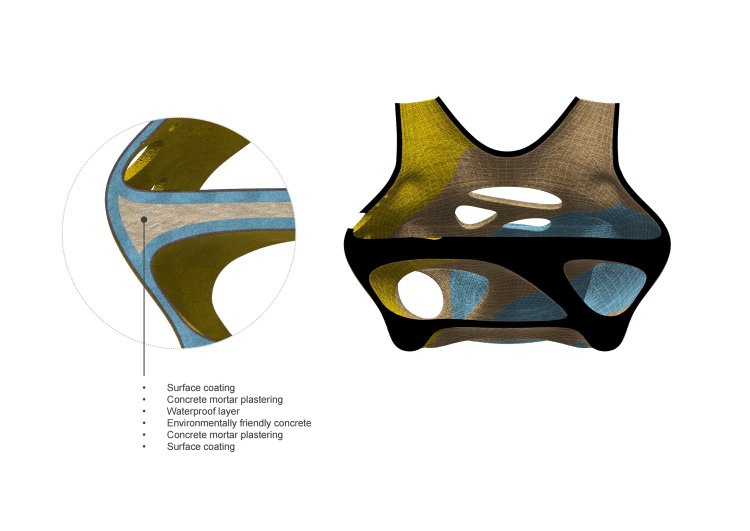The Otter House Project
Inspired by natural forms and tracing back to the very roots of architecture, ZOO Architects have taken organic materials such as rock, earth, and hay to create houses specifically tailored to the scale and needs of otters based on a deep knowledge of their preferred environments, social behaviour, diet, and cognitive abilities. The result is a complex, fascinating group of biomorphic housing prototypes.
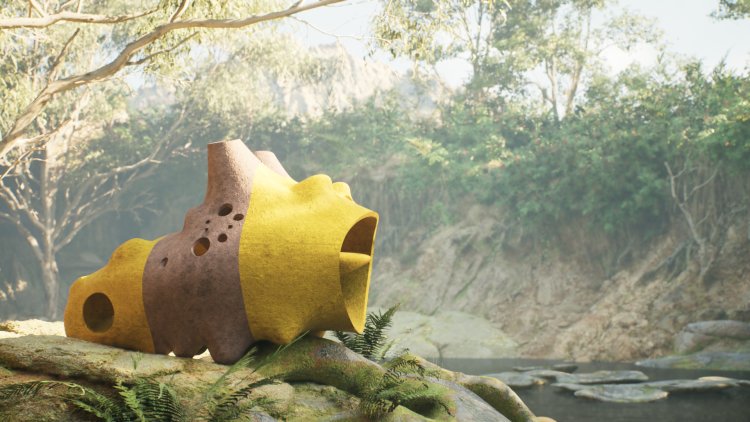
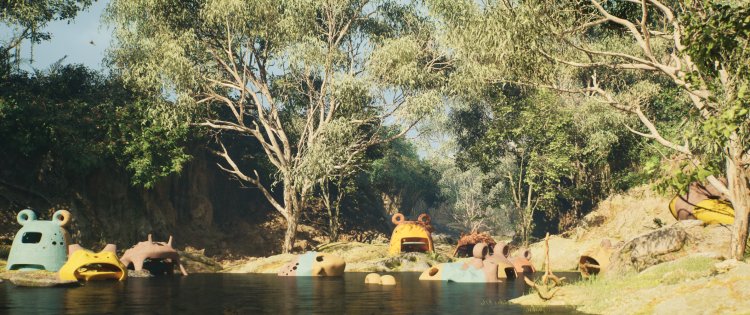
Bruno TAUT believes that design is about the unity of form and goals that transcend basic needs. Only when the pursuit of architecture is seen as a transcendence of the satisfaction of basic needs can it become an art, a game of imagination. This imagination must be rooted in the spiritual world and the meaning of human existence. Tthe work of architects should not only pursue the ephemeral "spirit of the times," but also those potential spiritual forces that endure through generations.
We seek inspiration by tracing the origins of civilization, exploring the most natural and pure spiritual values, the awe of nature, and the respect for life. This is the starting point of architecture.

Cosmopolitan
There are 13 species of otters worldwide. They are the top predators in many freshwater ecosystems and are highly sensitive to habitat destruction and water pollution. According to observations, with the improvement of river water quality, the number of otters has recovered. Therefore, otters are considered as indicator species for healthy freshwater ecosystems and flagship species for freshwater conservation in some regions. In China, otters were once widely distributed, but they sharply decreased in the late 20th century and are now listed as a second level protected animal in China.

Groups
Otters are social animals that usually live together and form family groups. Otters often sleep holding hands, which is a manifestation of their social behavior. They often live together in families or groups, typically consisting of a pair of adult otters and their offspring. They communicate with each other through sounds, postures, and odors. The behavior of sleeping hand-in-hand usually occurs among family or group members, helping to strengthen their bonds and trust.
Family
Otters practice monogamy, which means they have a firm belief in loyalty to their life partners despite their appearance of being somewhat foolish.They will store enough food inside their nests to prepare for unexpected needs.
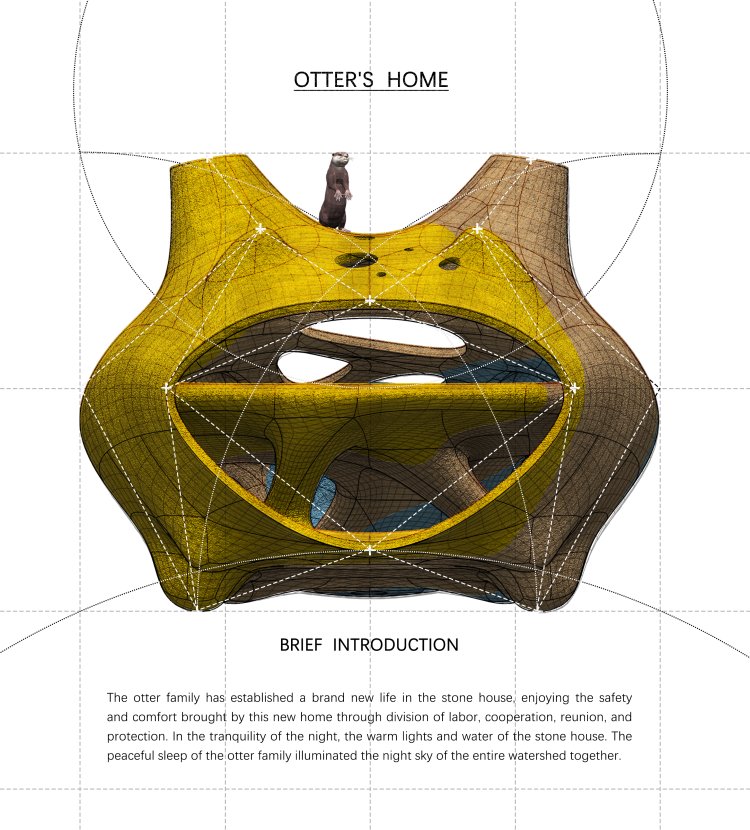
Behavior
Otters are very intelligent and agile in their daily lives. They can use stones to knock on shells to open them, allowing them to eat the soft-bodied animals inside. This behavior is considered a form of tool use, which is a rare occurrence among non-human animals. In addition, otters are very clean animals and often use their front paws to groom and clean their fur, keeping it dry and waterproof. Sometimes, otters catch fish not just for food, but also as a hobby. They will carry the caught fish ashore, lay them out one by one on the ground, and then turn around to catch more, simply for the fun of it. They enjoy playing in the water and often engage in activities such as chase games, diving, and fishing.
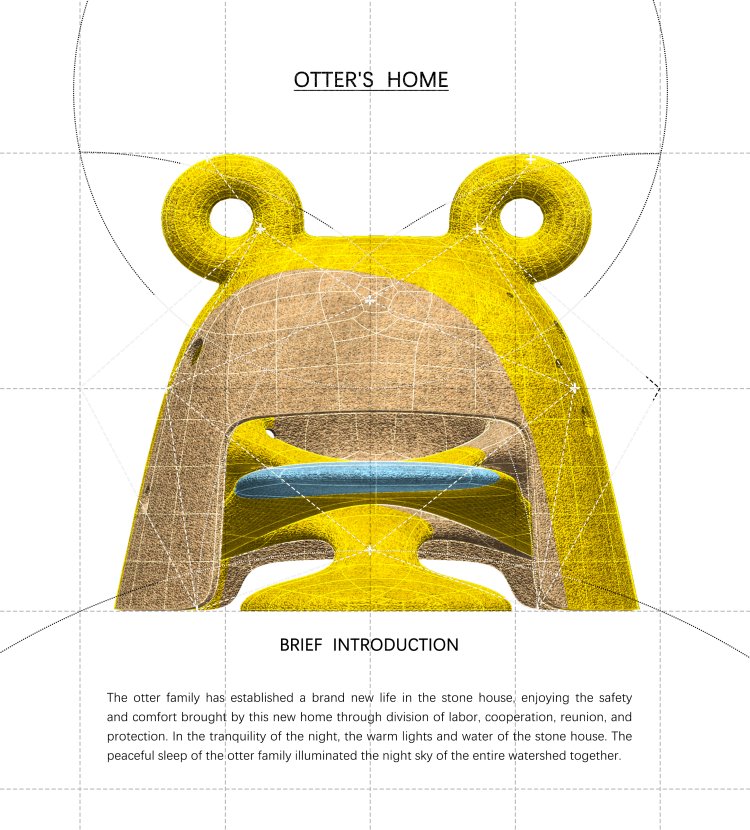
Clever
Otters enjoy throwing one or multiple small stones into the air with their paws and mouths, and then catching them again, repeating this cycle repeatedly. Some otters even use the same stone throughout their lifetimes. When not in use, they hide their dedicated stones in the pouch-like skin on their forelimbs and occasionally take them out to juggle. Scientists speculate that playing with stones is a way for otters to practice their skill of using stones, as they use them to crack the shells of crustaceans or mollusks when feeding.
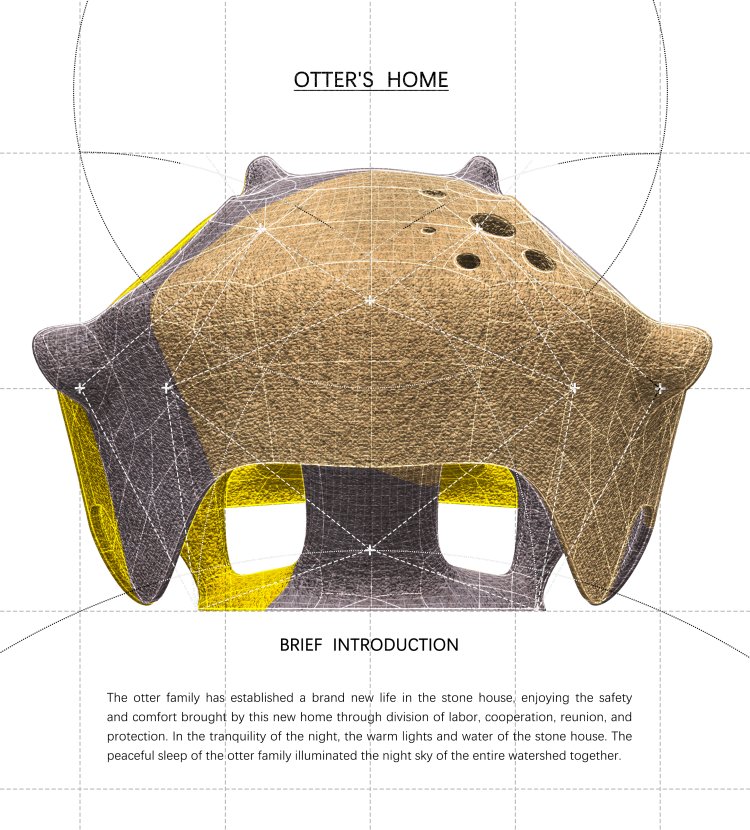
Environment
Otters are able to adapt to a wide range of environments, including rivers, lakes, marshes, and oceans. They typically prefer freshwater habitats with slow-moving water, high water clarity, sparse aquatic vegetation, and an abundance of fish, especially small streams with lush tree coverage along their banks. As top predators and key species in freshwater and coastal ecosystems, the presence of otters is an important biological indicator of environmental health.

Therefore, by designing suitable habitats for otters, we can not only protect the natural environment, but also take the opportunity to deeply reflect on the meaning of human architecture. It also makes us realize that architecture is not merely a product that satisfies human needs, but also a form of respect for nature and life.


In the territory of the otter, different units are constructed and floated on the water surface as playgrounds for the otters. The surface is equipped with carbon-based photovoltaic devices that generate electricity during the day and provide underwater lighting at night.

The surface of the stone pieces is made of concrete mixed with silicon. When sunlightshines on the surface of these stone pieces, they can generate electricity and transmitit to the bottom of the lamp, achieving the function of emitting light.


